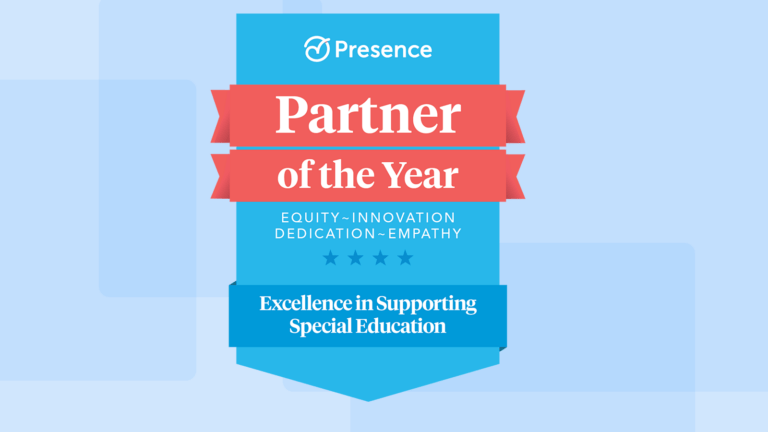
Many Teachers Remain Uneasy about Remote Learning
Although the new school year is underway, many teachers are still uncertain as to how much of the day will be dedicated to remote learning. With school districts and departments of education aiming to maximize both teacher and student attendance while minimizing the risk of COVID-19 spreading throughout their schools, if anything is clear it is that remote learning isn’t going away anytime soon.
School Administrators and classroom teachers are saddled with the responsibility of maintaining academic growth and the social and emotional well-being of their students, in what has become the new norm. Brick-and-mortar walls have temporarily been replaced with Wi-Fi hotspots and routers, facilitating the critical connections between educators and students.
When schools closed last spring, understandably many teachers were unprepared for remote learning and believed that their students’ learning would be compromised in this new environment. More than 1,000 U.S. educators shared these and other concerns about teaching online in a survey commissioned by the University of Phoenix.
Less than half of teachers said training for online learning was good or excellent. As a result, many teachers spent almost as much time prepping for classes as they did teaching, but 43% still thought their students would not learn as effectively online as they did in the classroom, despite their efforts.
1. Focus on Student Wellbeing
The same survey conducted by the University of Phoenix also found that 41% of educators were overwhelmed by the sheer number of resources that were available for teaching online effectively. The problem is that teachers were unwittingly looking in the wrong direction. The primary focus of the teachers shouldn’t be on the tools, but instead, teachers should be focusing on students as their top priority.
“Don’t worry about what your online classroom will like, how to record videos or where assignments should be turned in,” says Steven W. Anderson, the renowned digital learning and relationship evangelist at Web20Classroom, an education, and technology group.
“Instead, see how students are doing. Ensure their mental wellbeing. Don’t let someone tell you that because you aren’t using some tech fad you aren’t a good teacher. Do what is comfortable for you and most of all your students.”
And Anderson adds, “Once teachers have checked on the wellbeing of their students, they should analyze their pedagogy and decide if it will work in an online environment. If at first glance it doesn’t appear to, move on. If it is worth your time in investigating, do it, but don’t be afraid to abandon it when it doesn’t.”
2. The First Question to Ask
Teachers need to begin by focusing on why and when to use technology, before learning how to implement that technology with digital tools. “Think about it. Cooking isn’t about using an oven. It’s about making a dish palatable and appealing, adjusting for tastes and needs,” says Brianna Hodges who spoke on coaching beyond the tools and led the ed-tech coach orientation at FETC 2020 (Future of Education Technology Conference). “How you get there is up to what you have on hand and who you’re serving.”
“Loading PDFs into an LMS and calling it good, sends the message that learning is devoid of interaction,” says Hodges, who is also a consultant and advisor at Future Ready Coaches, a group of instructional leaders who design and deliver learning experiences for educators. “An effective classroom isn’t a room with written instructions on the board and assignments left on desks where students come and go without guidance and interaction for their teacher and classmates.”
3. New Isn’t Necessarily Better
Teachers, dedicated to finding the most effective methods of instruction, are always challenging themselves to provide their students with the best instructional tools and resources they can find. While undoubtedly commendable in these urgent times, it would be better for teachers to stick to the tools already incorporated in their classrooms.
Free educational technology resources with quick solutions meant to mirror the traditional learning experience are very enticing. And yet this could prove to be deceptive, as there may be a learning curve which the current situation doesn’t accommodate or technical hitches that might mitigate the benefits. So, when possible, it would be better for everyone involved to stick with what they know and what already works well.
Even now, in a time of urgency, educators and administrators would be wise to adhere to the Triple E Framework of engagement, enhancement, and extension of learning goals. “Effective technology use in learning is rooted in effective instructional strategies for learning,” University of Michigan professor Liz Kolb says on the Triple E Framework website.
Above all else, technology tools in an e-learning environment need to be leveraged to ensure students stay on task, reach their learning goals, and ultimately own their learning. A fringe benefit of this approach will be the encouragement of deeper dives into students’ areas of interest.
4. Lessons Need to be Interactive and Accessible
A proven strategy for engagement in face-to-face teaching is to combine instruction with interactive activities. Consistently employing this method helps build a collaborative culture, establish and maintain educational norms, and develop inquisitive students. Teachers need to adapt this formula to make their remote lessons engaging.
Nearpod, a student engagement platform designed to make lessons interactive and accessible with or without a facilitator, can be very helpful. The platform contains many features to aid remote learning such as allowing students multiple chances for absorbing the content and improving their skills.
Nearpod also allows educators to add interactive activities to lessons, which enhances student participation in both real-time and self-paced lessons in ways that are fun. Included are several interactive options, including adding polls, fill-in-the-blank activities, matching pairs, short quizzes, and open-ended questions, and having students draw a picture to show their learning.
Each of these activities can be modified to serve different age groups, and generates data back to teachers to indicate how well the students are learning the content. Another important feature is that students can easily access Nearpod on an adult’s smartphone, enabling students without Wi-Fi access or a computer at home to participate.
5. The Hidden Power of Collaboration
Students working together or in teams can be implemented when working remotely. Incorporating collaborative activities into virtual classes will enhance the educational experience in a similar way to teaching face to face.
To facilitate this it can be helpful to activate the feature on the Zoom platform to place students in breakout rooms during the lesson. When students are partnering for project work, they should be grouped by design. For more informal activities, they can be teamed up more casually.
Activities that students can collaborate on that can be conducted in breakout rooms include storytelling, turn and talk, learning stations or centers, workshops, jigsaws, think pair share, and feedback protocols like critical friends and gallery walk.
Although mastering the art of working in groups will take some practice, the group work will keep them engaged in developing their problem-solving and communication skills. It should be kept in mind that teachers in the younger grades will need to encourage parents to assist their young children in navigating the tech.
In contrast, older children will be able to schedule their own teamwork time once they become comfortable with Zoom, and thereby gain independence from their teachers. And for schools that don’t use Zoom, other platforms have the breakout feature as well, such as GoToMeeting, Microsoft Teams, and RingCentral.
6. The Flipped Classroom and Flipped Learning
A flipped classroom is where teachers record their lectures so that the students can watch them outside of class. This allows class time to be dedicated to doing homework. Such an approach facilitates learning in that it allows students to ask their teachers questions, or work together with peers on their homework instead of struggling with the homework by themselves and asking for help the next day.
Flipped learning is a pedagogical approach in which direct instruction moves from the group learning space to the individual learning space, and the resulting group space is transformed into a dynamic, interactive learning environment where the educator guides students as they apply concepts and engage creatively in the subject matter.
By migrating from a flipped classroom to flipped learning, which is all about active engagement, teachers can implement multiple methodologies within their classrooms, promoting more individual and small-group instruction.
Virtual tools such as screen-recording apps, virtual meeting rooms, collaborative documents, and learning management systems become the facilitators of both short-term and long-term paths to creating interactive learning that is both dynamic and engaging for teachers and students alike.
7. Team Approaches to Teaching
By utilizing educational platforms such as Google Classroom and Microsoft Teams, and learning management systems such as Schoology and Canvas, grade-level, and content-area teachers can implement co-teaching models into their virtual classrooms.
The benefits of co-teaching approaches during remote learning include parallel, alternate, station, and team teaching. All of these models go a long way towards supporting teachers and could provide a consistent learning experience for students.
8. Immersive Learning
Today’s students are connecting with their teachers via videoconferencing and online collaboration tools from home, but they may not be getting the direct, constant instruction they would get in a traditional classroom, says Richard Henderson, director of global education solutions for Lenovo.
“Students may struggle to connect with the principles and educational methodologies with new material, especially in the area of STEM-based learning (a curriculum based on teaching the four disciplines — science, technology, engineering, and mathematics — in an interdisciplinary and integrated learning paradigm), which requires, in a lot of cases, more instruction and more hands-on interaction with the teacher,” he says.
Enter immersive learning. Immersive learning is essentially the introduction of virtual learning experiences that can help teachers address that challenge of sparking curiosity and creativity among students, even if they’re not with them in person.
For example, with the Google Expeditions mobile app and a mobile headset, teachers now have the option to virtually transport students to the Acropolis of Athens and learn about Greek history and architecture, instead of just assigning readings about Ancient Greece.
For students who lack access to a headset, teachers can provide 360-degree videos that permit students to explore a scene from different perspectives, giving them the feeling that they are actually there. And similar types of experiences can be replicated with science and technology.
Jason McKenna, director of the global educational strategy for VEX Robotics, says that creating these types of platforms for students not only leads to higher engagement but also encourages them to experiment and tinker. “We know that immersive learning is key to creating a space where students feel autonomously invested in their work and their success,” he says.



